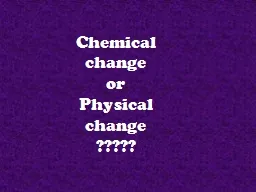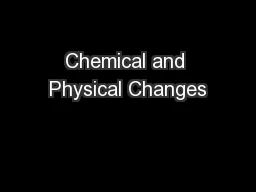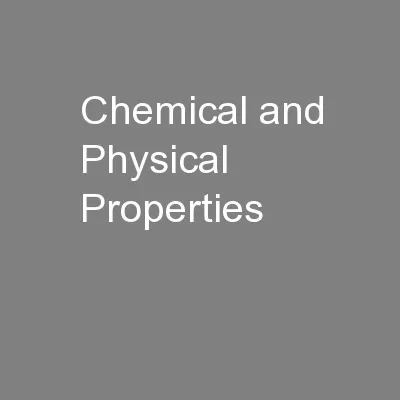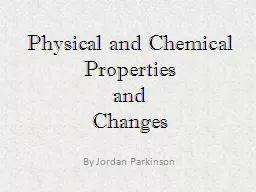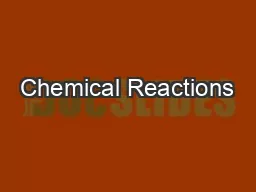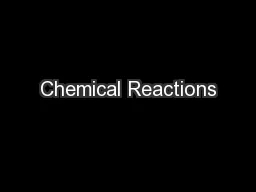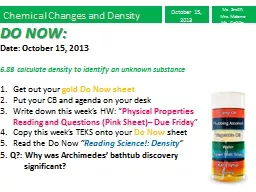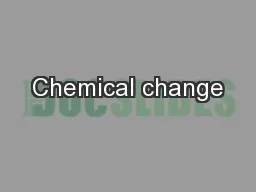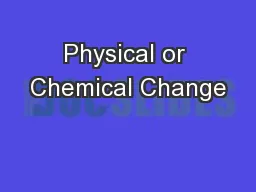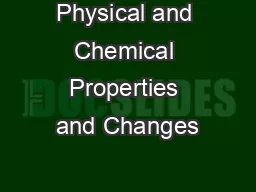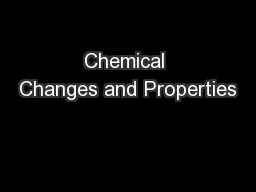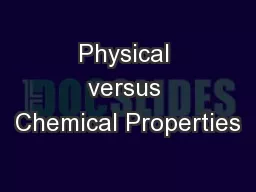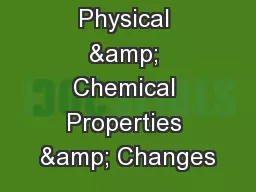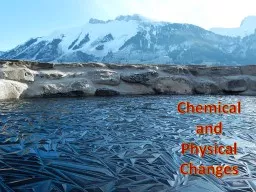PPT-Chemical change or
Author : kittie-lecroy | Published Date : 2019-11-22
Chemical change or Physical change Elephant Toothpaste Physical or Chemical The yeast acts as a catalyst to make the hydrogen peroxide break down really quickly
Presentation Embed Code
Download Presentation
Download Presentation The PPT/PDF document "Chemical change or" is the property of its rightful owner. Permission is granted to download and print the materials on this website for personal, non-commercial use only, and to display it on your personal computer provided you do not modify the materials and that you retain all copyright notices contained in the materials. By downloading content from our website, you accept the terms of this agreement.
Chemical change or: Transcript
Download Rules Of Document
"Chemical change or"The content belongs to its owner. You may download and print it for personal use, without modification, and keep all copyright notices. By downloading, you agree to these terms.
Related Documents

